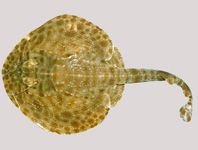Abstract
With 372 species, Xysticus C.L. Koch, 1835 is the largest genus in the family Thomisidae (WSC 2016). As with other speciose genera, the genus has never been revised on a global scale and is only thoroughly known in a few parts of the Holarctic, namely Central and Northern Europe, North America, Israel and Japan. Over 200 species are known from one/two taxonomic references only, or from a single illustrated description/redescription (WSC 2016). The fact that 40% of species are known from only one sex (104 females and 54 males) or from juveniles (8 species) (WSC 2016) suggests that Xysticus requires revision. During a study of crab spiders of the Caucasus, we experienced difficulties in identifying Xysticus spasskyi Utochkin, 1968 due to the lack of detailed figures of the male palp and female epigyne. This species was based on the holotype female collected from an unspecified locality in the coastal part of modern Kransnodar Province (Utochkin 1968). The male of X. spasskyi was described as X. umbrinus Utochkin, 1968 from Kuban' Region (currently Krasnodar Province). The two species were synonymised by Ovtsharenko (1979). Besides Krasnodar Province, the species has been reported from North Ossetia (Ponomarev & Komarov 2013) and South Ossetia (Ponomarev & Komarov 2015), Georgia, Azerbaijan and the Crimea (Mikhailov 2013; Otto 2015). The illustrations in the descriptions of Utochkin (1968) and Ovtsharenko (1979), are either very small, schematic or provide no diagnostic details. The endogyne (=vulva) of this species has never been illustrated. Here we redescribe this species and compare distant populations.
References
Logunov, D.V. & Marusik, Y.M. (1998) A new species of the genus Xysticus from the mountains of south Siberia and Mongolia (Araneae, Thomisidae). Bulletin of the British Arachnological Society, 11, 103‒106.
Mcheidze, T.S. (1997) [Spiders of Georgia: Systematics, Ecology, Zoogeographic Review]. Tbilisi University, Tbilisi, 390 pp. [in Georgian]
Mikhailov, K.G. (2013) The spiders (Arachnida: Aranei) of Russia and adjacent countries: a non-annotated checklist. Arthropoda Selecta, 3 (Supplement), 1‒262.
Otto, S. (2015) Caucasian Spiders. A faunistic database on the spiders of the Caucasus. Version 1.4.3. Available from: http://caucasus-spiders.info/ (accessed 17 May 2016)
Ovtsharenko, V.I. (1979) Spiders of the families Gnaphosidae, Thomisidae, Lycosidae (Aranei) in the Great Caucasus. Trudy Zoologieskogo Instituta Akademija Nauk SSSR, 85, 39‒53 [in Russian]
Ponomarev, A.V. & Komarov, Y.E. (2013) Preliminary compilation of material on the spider fauna (Aranei) of North Ossetia-Alania. Trudy Severo-Osetinskogo Gosudarstvennogo Prirodnogo Zapovednika, 2, 76‒111. [in Russian]
Ponomarev, A.V. & Komarov, Y.E. (2015) Spiders (Aranei) of Republic of South Ossetia. The South Russia: ecology, development, 10, 116‒147.
http://dx.doi.org/10.18470/1992-1098-2015-1-116-147Shorthouse, D.P. (2010) SimpleMappr, an online tool to produce publication-quality point maps. Available from: http://www.simplemappr.net (accessed 17 May 2016)
Uhl, G., Nessler, S.H. & Schneider, J.M. (2010) Securing paternity in spiders? A review on occurrence and effects of mating plugs and male genital mutilation. Genetica, 138, 75‒104.
http://dx.doi.org/10.1007/s10709-009-9388-5Utochkin, A.S. (1968) [Spiders of genus Xysticus of USSR fauna (Determination key)]. Ed. Univ. Perm, Perm, 73 pp. [in Russian]
WSC (2016) World Spider Catalog. Version 17. Natural History Museum Bern, version 17.0. Available from: http://wsc.nmbe.ch (accessed 17 May 2016)

